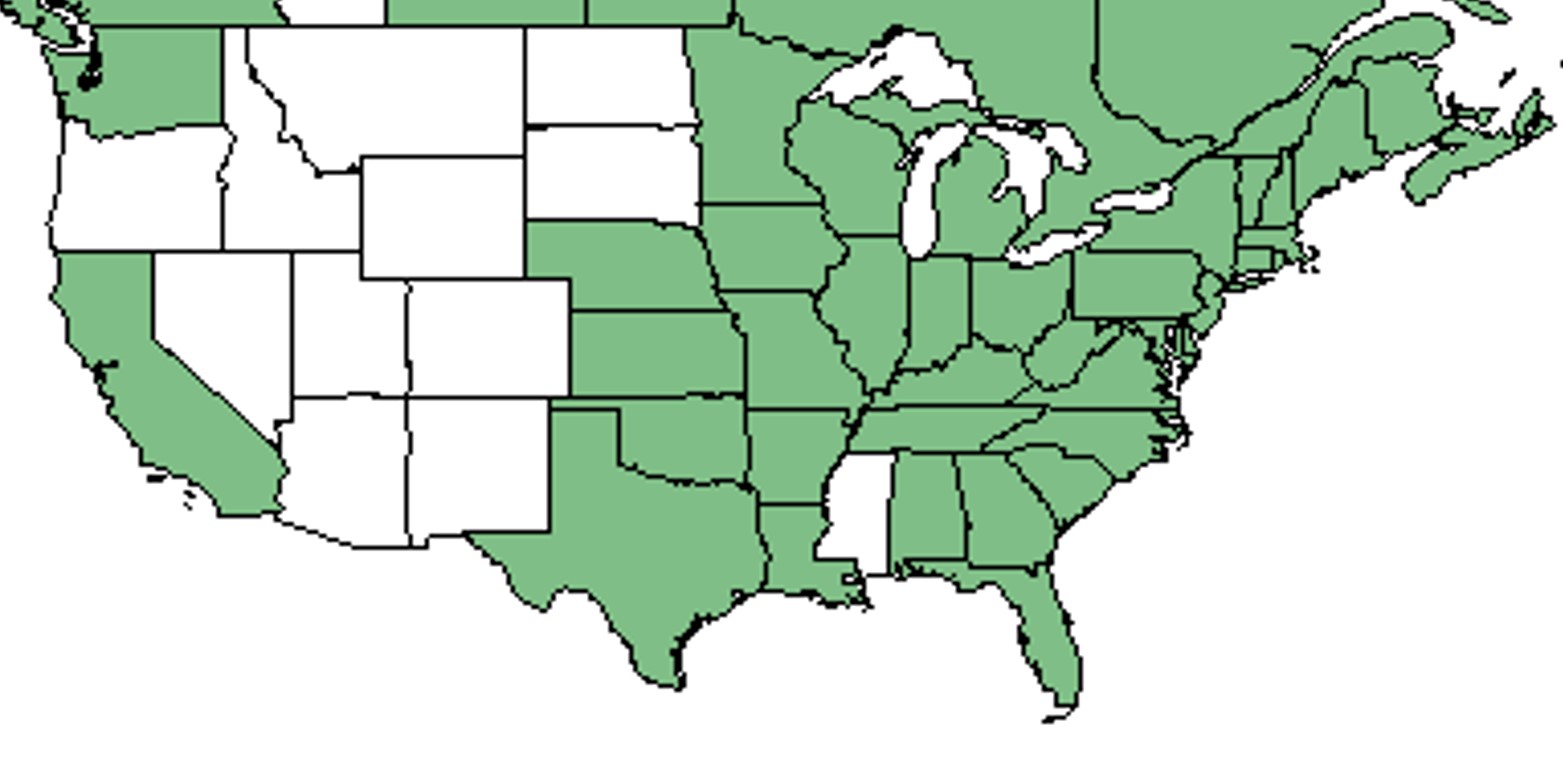Persicaria punctata
| Persicaria punctata | |
|---|---|

| |
| Scientific classification | |
| Kingdom: | Plantae |
| Division: | Tracheophyta- Vascular plants |
| Class: | Magnoliopsida – Dicotyledons |
| Order: | Caryophyllanae |
| Family: | Polygonaceae |
| Genus: | Persicaria |
| Species: | P. punctata |
| Binomial name | |
| Persicaria punctata (Elliott) Small | |

| |
| Natural range of Persicaria punctata from USDA NRCS Plants Database. | |
Common name: Dotted Smartweed
Synonym: Polygonum punctatum Elliott
Contents
Taxonomic notes
Description
A description of Persicaria punctata is provided in The Flora of North America.
"Annuals or perennials with lanceolate to elliptic leaves. Leaf base cuneate; ocreae with or without cilia. Flowers in racemes arranged paniculately at the apices of stems and branches. Sepals not, or only slightly enlarged in fruit. Nutlets trigonous, biconvex or lenticular." - Radford et al 1964
"Annual or rhizomatous perennial with erect, terete, glabrous or short-strigose stems. Leaves glabrous to short-strigose, 6-15 cm long, 1-3 cm wide, tapered to petioles 2-20 mm long; ocreae strigose, 1-2 cm long, cilia 1-8 mm long. Racemes straight or arching, densely to very loosely flowered. Calyx white or greenish, rarely tinged with red or pink, conspicuously glandular-punctate. Nutlets black, glossy, trigonous or biconvex, 2.5-3 mm long." - Radford et al 1964
Distribution
Ecology
Habitat
In the Coastal Plain in Florida, P. punctata occurs along wet margins of wax myrtle thickets (FSU Herbarium). Associated species include wax myrtle (FSU Herbarium).
Phenology
Flowers in September (FSU Herbarium).
Seed dispersal
Seed bank and germination
Fire ecology
Pollination
Use by animals
Diseases and parasites
Conservation and Management
Cultivation and restoration
Photo Gallery
References and notes
Florida State University Robert K. Godfrey Herbarium database. URL: http://herbarium.bio.fsu.edu. Last accessed: November 2015. Collectors: Cecil R. Slaughter. States and Counties: Florida: St. Johns, Volusia. Compiled by Tall Timbers Research Station and Land Conservancy.